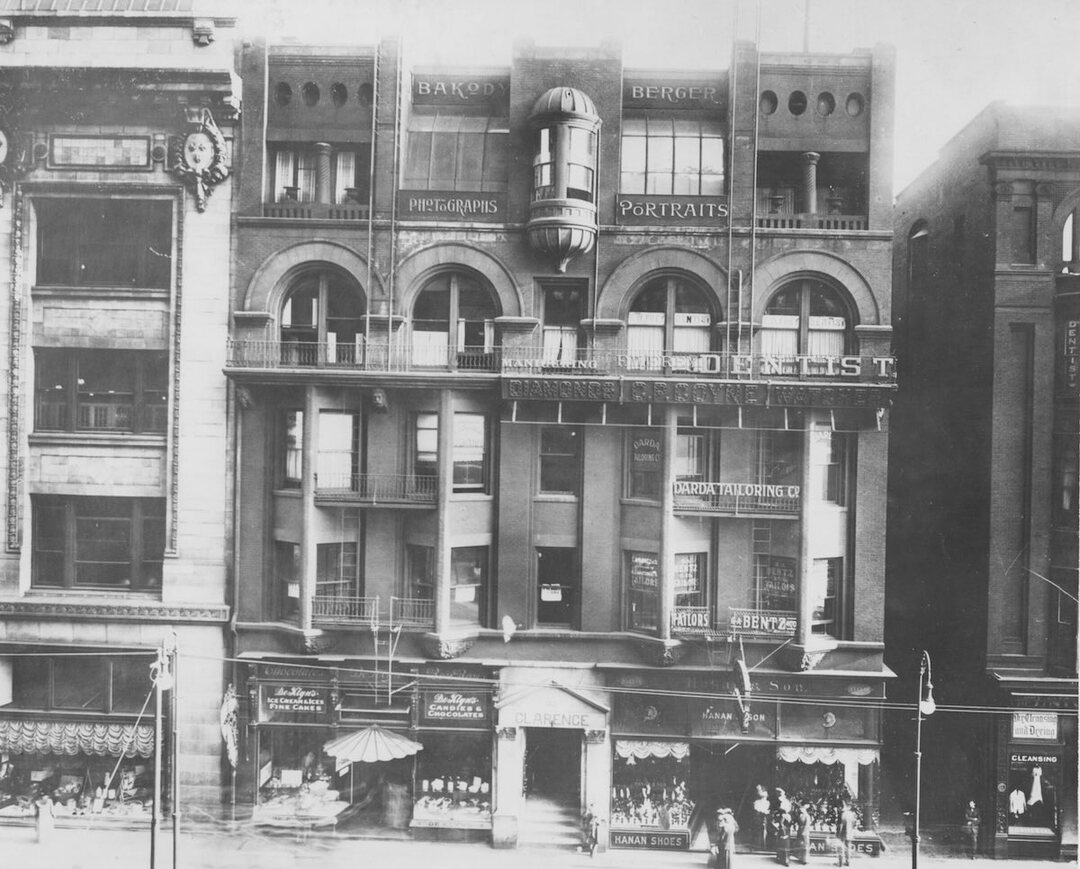Taylor Building

The history of the Taylor Building highlights the rise and fall of Cleveland's downtown department stores as well as the recent revitalization of Euclid Avenue. It was part of the wave of department store closings that signaled the beginning of downtown's economic woes.
The Taylor Department Store began with the partnership of William Taylor and Thomas Kilpatrick, both Scottish immigrants. Together they opened the first dry-goods store — a one-room shop — on Euclid Avenue in 1870. Taylor, a devout Presbyterian, drew curtains to hide the store's display windows on Sundays and refrained from placing Sunday ads in the daily newspapers. In 1885, William Taylor's son, John, joined the company. When Kilpartick left Cleveland the following year, the company was renamed William Taylor Son & Co. Sadly, both father and son succumbed to tuberculosis five years apart, in 1887 and 1892. After John's passing, his wife Sophie became president of the company and ran the store until her death in 1936.
Sophie Strong Taylor oversaw the continued expansion of the company. In 1907, she moved the family store to a new five-story building at 630 Euclid Ave, known as the Taylor Building. Six years later, four more stories were added to Taylor's. In the 1930s, the company acquired the adjacent Taylor Arcade and thoroughly modernized the store. After Sophie Taylor died, the May Co., Cleveland's largest department store (located at Public Square and Ontario Street) acquired a substantial interest in Taylor's, which continued to maintain both its name and autonomous operation.
The postwar years saw Taylor's chase the same suburban dreams as other retailers. In 1958, the store opened a branch at the Southgate Shopping Center in Maple Heights. The changing retailing economy spurred by suburbanization eventually led the May Co. to close Taylor's downtown location in 1961 and rename the Southgate branch. The closure of the original Taylor's concerned nearby retailers, who worried about slipping sales. Then, in 1964, Albert A. Levin, a local developer, stepped in and purchased the defunct store, which he remodeled into an office building called the 666 Euclid Building, which housed a Gray Drug store and Lerner clothing shop at street level. The address change, from 630 to 666, was likely intended to sound catchy, but in time it came to be seen as a liability. In the meantime, however, the future seemed bright. Levin, whose efforts to build downtown's first new apartment tower further out Euclid had been stymied by the city's strict adherence to the Erieview downtown renewal plan, said of his latest investment, "It is terribly important that someone take the lead in revitalizing Euclid Avenue. The action should be taken by private investors in contrast to the socialization shown in urban renewal projects such as Erieview."
The 666 Euclid Building held its own as an office building but gradually became more difficult to lease. In the early 1980s the building changed hands, getting a remodeling and a new name: Atrium Office Plaza. But by 1986, the owners reclassified the property's address as 668 after the previous address's "devilish stigma" were, they argued, dissuading would-be lessees. In 1995 and again in 1998 the Atrium Office Plaza was sold. Each time the new investors hoped to turn the corner, only to be frustrated as more and more tenants departed. By 2007 the onetime Taylor Building stood empty.
The decided turning point — the first since Levin's early 1960s purchase — finally came in 2008, when another investor took possession and K&D, a rising presence in downtown residential conversions, took advantage of historic preservation tax credits to remake the former department store-turned-office plaza into upscale apartments. Called the Residences at 668, the latest repurposing of the Taylor Building coincided with other efforts to revitalize Cleveland's economy and reinvent downtown. Since the catalytic $197 million Euclid Corridor Transportation Project, completed that same year, investors have spent more than a billion dollars on other downtown projects. More than most downtown buildings, the Taylor Building has epitomized the three eras in Cleveland's downtown, transforming from a department store to an office building to luxury apartments.
Images









